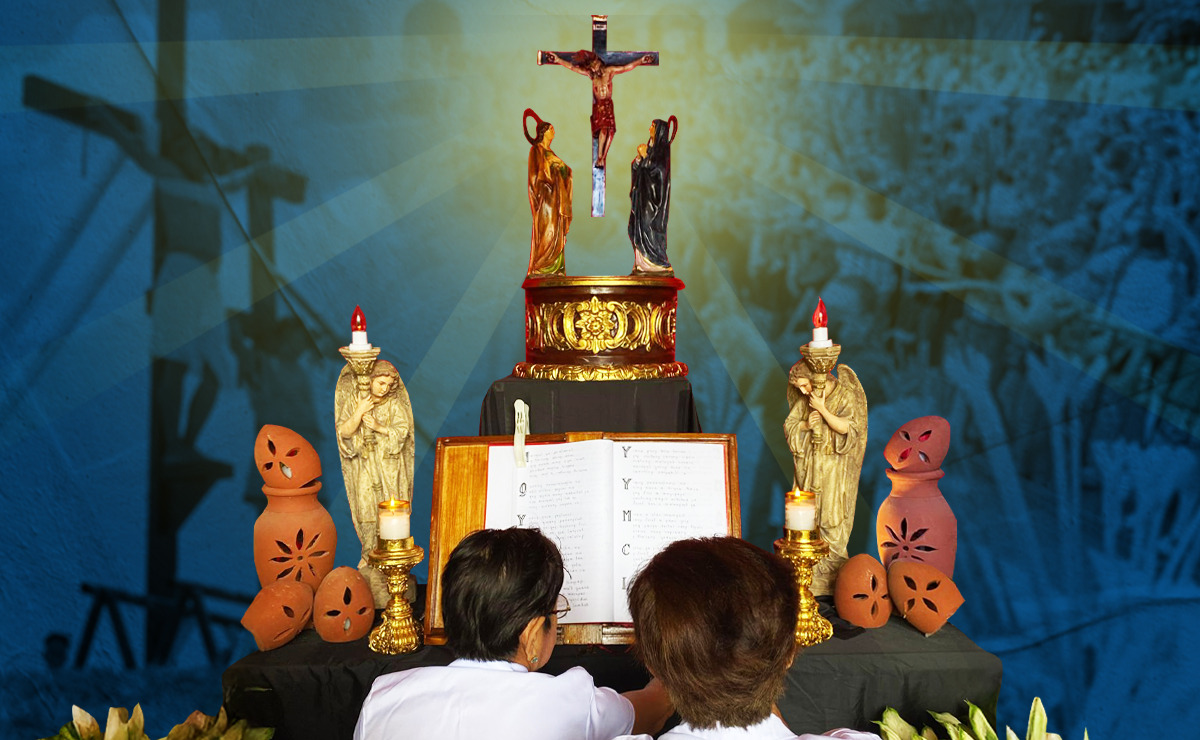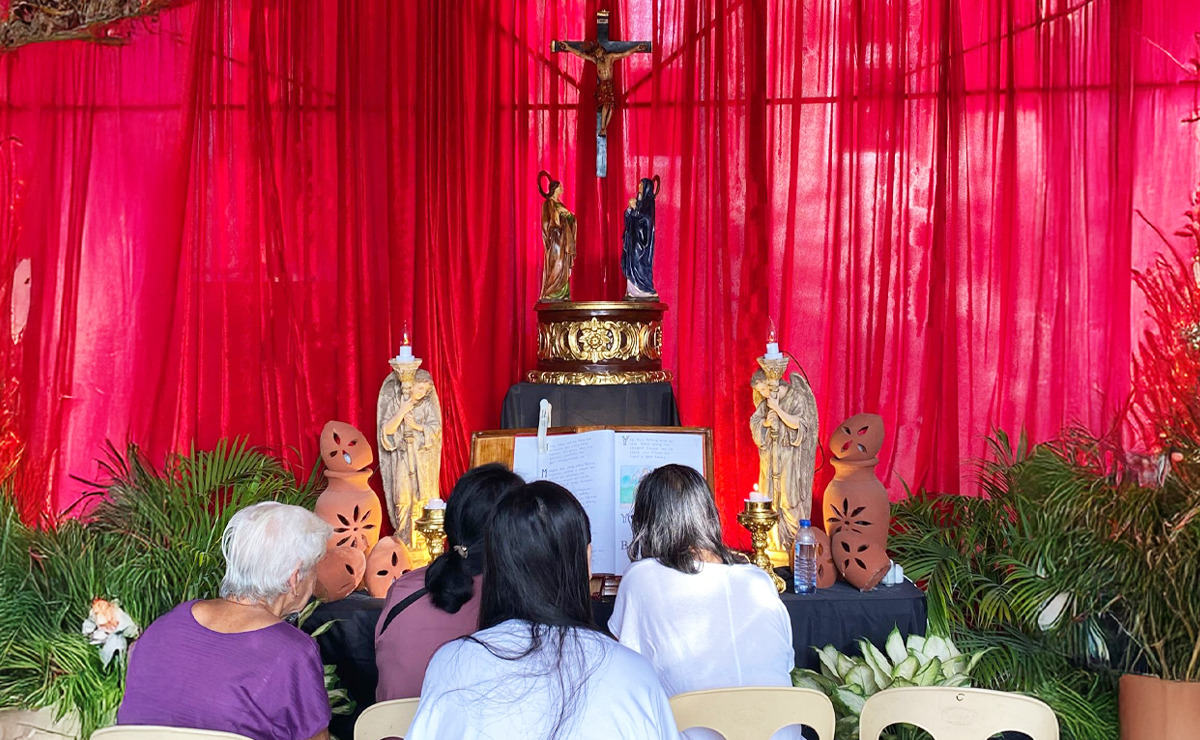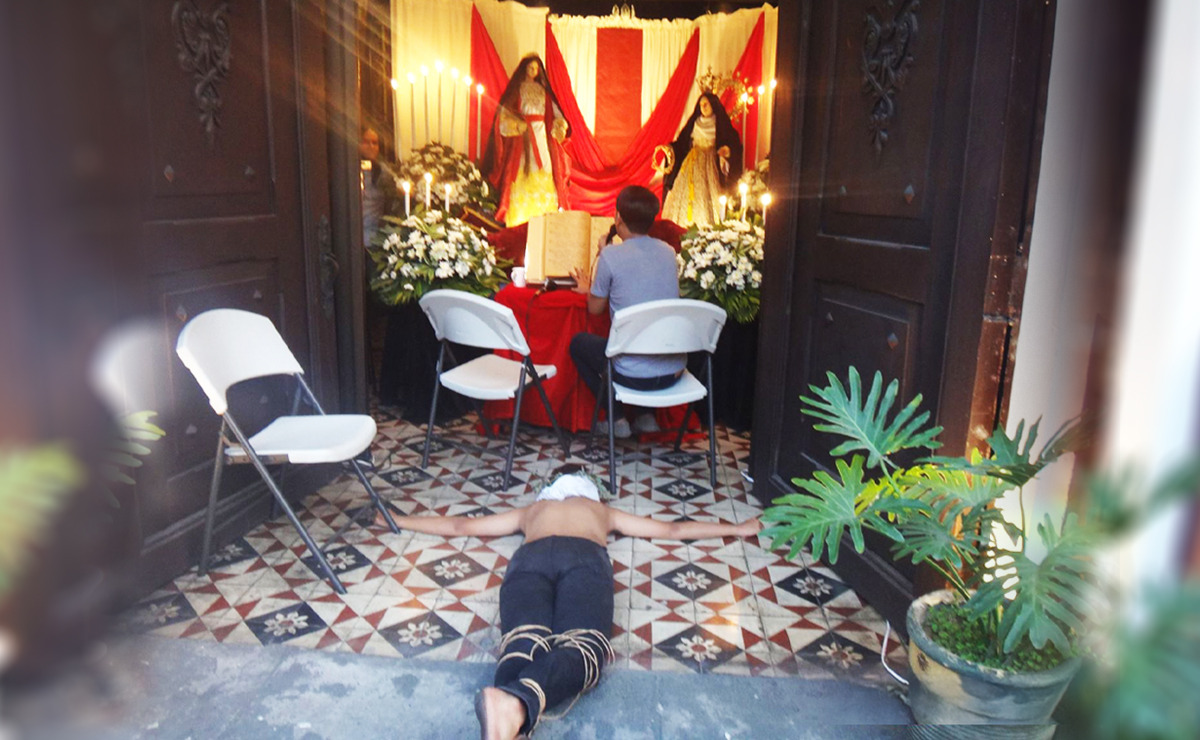

PAMPANGA HOLY WEEK composite image from Inquirer and Emmanuel David
MANILA, Philippines—As Holy Week started on Sunday, April 13, the streets of Pampanga, a province in Central Luzon, is again teeming with its rich traditions, which residents have kept alive throughout the years.
To celebrate the season, most residents commence the pabasa, or the singing of the story of the passion, death, and resurrection of Jesus Christ, in a makeshift chapel they call puni.
Puni in Kapampangan is a “makeshift shrine”, the National Historical Commission of the Philippines – Museum of Philippine Social History said, explaining that aside from churches, it is where the pasyon is read and chanted, as well.


PABASA SA ‘PUNI’. Residents in Guagua, Pampanga sing the pasyon in a makeshift chapel called puni. PHOTO COURTESY OF EMMANUEL DAVID
Aldrine Aquino, FMGS, a 34-year-old seminarian from Pampanga, told INQUIRER.net that households and communities in sitios and districts erect puni on Palm Sunday, when the church commemorates Jesus Christ’s entrance to Jerusalem.
RELATED STORY: Holy Week road traffic jams to peak Holy Wednesday to Maundy Thursday
He explained that while the pabasa had to be done only in churches, the erection of makeshift chapels started to bring the devotion closer to people, especially since the number of households expressing interest to sponsor a pabasa grew.
Aquino pointed out that this tradition thrives in the concept of penitensya, or penitence, as those who chant the pasyon do so even when it means singing nonstop for a day.
“Its essence is really penitential because most often, when you sing the pasyon, you have to finish it, and unless you complete the book, you are not permitted to sleep, so for us, it is really penitence,” he said.


MAGDARAME. A penitent, called magdarame in Pampanga, prostrates before a makeshift altar created for a pabasa. PHOTO COURTESY OF THE NATIONAL HISTORICAL COMMISSION OF THE PHILIPPINES – MUSEUM OF PHILIPPINE SOCIAL HISTORY
But aside from those directly engaged in the pabasa, residents traversing the roads in penance while carrying the cross or self-flagelatting find the puni as a place where they can revere the great sacrifice of Jesus Christ.
“As penitents, or magdarame, see a puni, there is a cross and an image of the Sorrowful Mother, so they prostrate and have themselves flagelatted as a sign of reverence,” he told INQUIRER.net.



